The ancient Egyptians were known for their elaborate funerary traditions and beliefs in life after death, with the pharaohs being the most powerful and religious rulers of their time. The Pyramid Texts, engraved with great precision in hieroglyphics, were found within the deepest walls of the pharaohs’ lavish tombs and served as protective invocations, known as spells, meant to help the king’s transition into the afterlife.
Archaeologists were able to split the Pyramid Texts into two categories: personal incantations focused on guiding the spirit of the deceased out of the tomb and into the afterlife, and sacerdotal spells recited during the funeral ceremony to complete the journey into the new life. These texts are a unique and valuable source of information about ancient Egyptian gods and beliefs, giving true insights into ancient Egyptian history, its traditions, pharaohs, rises and falls. They also became a first-hand source for all the details of the ancient Egyptian gods and beliefs.

The pyramid texts of ancient Egypt’s pyramids are a rich source of information on their beliefs and religion. Top: Public Domain Bottom: Tryfonov / Adobe Stock
What are the Pyramid Texts?
Throughout the history of the world, every major culture and civilization had its own set of complex funerary traditions. Humans in every part of the globe paid special attention to death and the afterlife, and most, if not all, believed in some sort of life after death. It is because of such beliefs that burials were perhaps the most important part of a person’s entire life cycle. And that was especially true for ancient Egyptian pharaohs. These immensely powerful rulers were highly religious and devoted to their vast pantheon of gods . And when the final hour ran out, their remains were laid down into specially prepared and lavish tombs – the pyramids that we all know and admire.
The construction of these pyramids was begun even during the pharaoh’s life, and it sometimes took decades for their completion. It was a sign of power, devotion, and the ruler’s closeness to the gods. Across centuries, however, rulers dropped the building of costly pyramids, and instead shifted to lavish underground tombs, carved into stone and spreading deep into the ground. But the classic funerary elements were still preserved: richly decorated walls painted with scenes of life and death; detailed carvings of gods and key historical figures; beautiful art and various hieroglyphic inscriptions. But it was something that hid in those pyramids of old that sparked the curiosity of early archaeologists. Something that was far more precious to them than just images and carvings: the Pyramid Texts.
Engraved with great precision and incredibly extensive, these hieroglyphic texts adorned the deepest walls of the ancient tombs, as well as the pharaohs’ sarcophagi. For the most part, the Pyramid Texts can be dated to the period of the Old Kingdom , the part of ancient Egyptian history that spanned from 2700 to 2200 BC. It is this period that is called the “Age of the Pyramids”, as it is the time when all the great and famed pyramid-building pharaohs lived: Khufu, Sneferu, Menkaure, and Khafre. The world-famous Pyramids of Giza belong to this period.
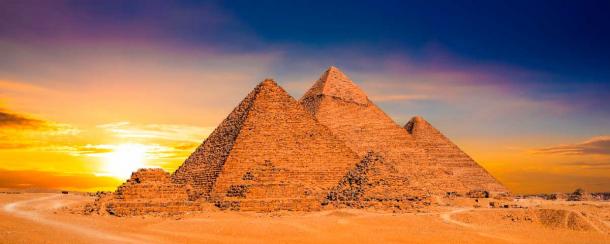
The Pyramid Texts date to the famously captivating Pyramid of Giza ( Günter Albers / Adobe Stock)
Religious Texts from Ancient Egypt’s Golden Age
It is important to note that these funerary texts were not included in every burial. Even though high officials and powerful nobles also received lavish burials, such texts were not included. Instead, they were for the most part reserved only for the pharaoh’s burial, and could be found only within a pyramid, as their name suggests. The tradition was dropped with the gradual decline in pyramid building, but similar practices appeared later in ancient Egyptian history: funerary scenes and texts were painted onto coffins, and scribes compiled the special Book of the Dead.
These Pyramid Texts are very unique in the overall history of ancient Egypt. They served as protective invocations (known as utterances), commonly called spells, that were meant to help the king’s transition into the afterlife. The spells would help with the transformation of the late pharaoh into an Akh, where he would be allowed to mix with the gods if worthy. What is more, archeologists were able to split the Pyramid Texts into two distinct categories: personal and sacerdotal.
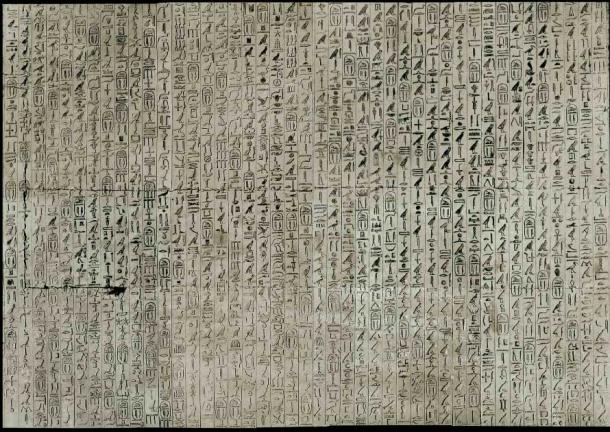
Pyramid text utterances 272 to 260 from Unas pyramid. ( Public Domain )
The former, more personal incantations were focused primarily on guiding the spirit of the deceased out of the great tomb and into the new life, beyond death. In such texts, the spells would deal with the deceased taking the provided food and supplies placed within the tomb, and then seeking nourishment from the gods themselves. Some spells dealt with the spirit’s transformation into an Akh, a complex term that is translated to “magically effective one”. Akh is mostly described as the intellect of the deceased, a key part of the soul that made one worthy to be with the gods.
In contrast, the sacerdotal spells are more ritualistic, and were certainly chanted by a priest during the funeral ceremony. Much like the personal texts, they were recited as a way to transition the dead towards the gods, making the journey into the new life complete. All of them were written as to be chanted and uttered in a ritual way, adding to their importance in the funeral ceremonies.
The Discovery of the Oldest Pyramid Texts
Around 1880, French Egyptologist Gaston Maspero, arrived in the desert of Saqqara with the aim of excavating an odd-looking hillock, which his German colleague Karl Richard Lepsius considered to be a ruin of some significance. Maspero made great progress, and soon realized that he was excavating a ruined pyramid from the Sixth Dynasty. It turned out to be the resting place of King Pepi I Meryre , the third pharaoh of that dynasty. However, the pyramid had something unique: a series of inscribed texts adorning the tomb walls. It was a novelty for Egyptologists, and most of Maspero’s colleagues firmly claimed that it was a mastaba, an older and simpler tomb than a pyramid.
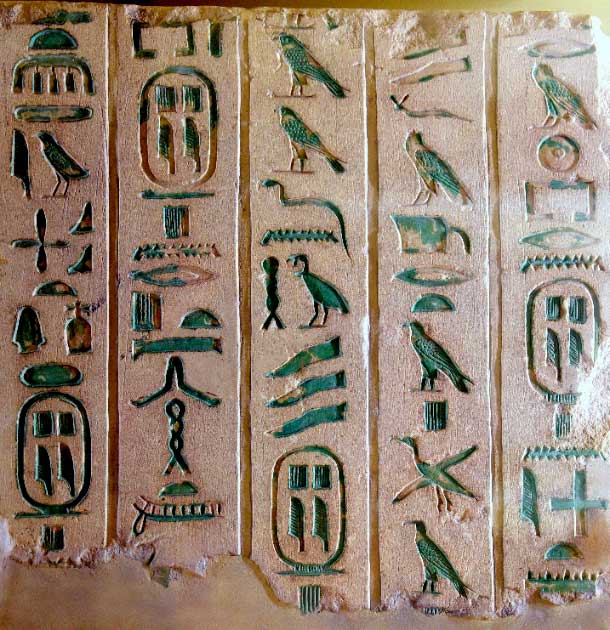
This limestone block fragment came from the debris of the north wall of the antechamber within the pyramid of Pepi I at Saqqara. The inscriptions describe the formulae for the ascent of the king to heaven and for his eternal supply of food and drink; the so-called Pyramid Texts. From Saqqara, Egypt. Old Kingdom, 6th Dynasty, 2332-2287 BC (Osama Shukir Muhammed Amin / CC BY SA 4.0 )
But even so, Maspero continued his digs, and close by he discovered yet another ruined pyramid. This one turned out to be the resting place of Pepi’s successor, Pharaoh Merenre Nemtyemsaf I. Maspero was the first man to penetrate into the pyramid’s subterranean tomb, and there discovered a sarcophagus with the pharaoh’s extant remains. The walls were also covered with Pyramid Texts, and at this point Maspero was certain that he had discovered something entirely new within ancient Egyptian traditions.

The Pyramid of Merenre in Saqqara is mostly in ruins, difficult to reach, and closed to the public. Photo from the 1990s (Wannabe Egyptology / CC BY SA 3.0 )
In time, with further excavations, it became clear that the rulers of the Old Kingdom, the so-called pyramid builders, had a distinct custom of adorning the walls of their tombs with special invocations and spells. The term “pyramid texts”, coined as early as Maspero’s findings, stuck in Egyptology and is still used today. All in all, the texts were found in the pyramids of the following rulers, almost all of them belonging to the Sixth Dynasty: Unas, Teti, Pepi I, Ankhesenpepi II, Merenre I, Pepi II, Neith, Iput II, Wedjebetni, Behenu, Qakare Ibi. With the gradual decline of the Sixth Dynasty, during the rule of Pepi II, and its eventual collapse during the First Intermediate Period, the practice of pyramid building, which was very costly and time consuming, declined and eventually stopped entirely. And with it, the practice of pyramid texts ended as well.
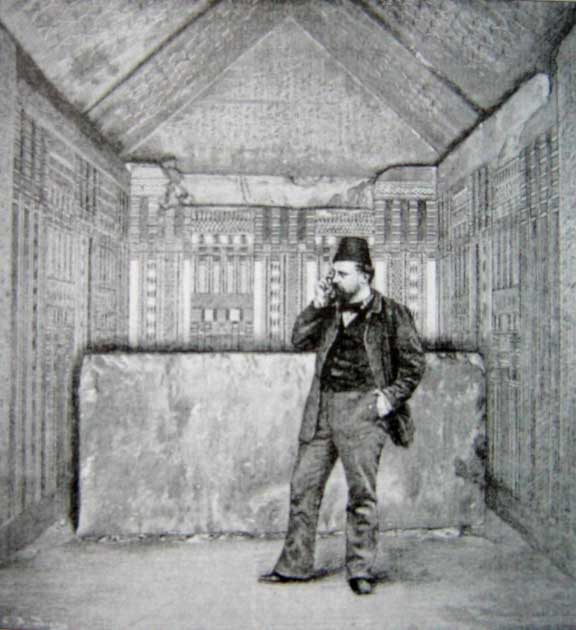
Maspero in the burial chamber of Unas’ pyramid, which has lines of protective spells on the west gable, which are the only inscriptions on the walls surrounding the sarcophagus ( Public Domain )
The Resurrection of the Pharaohs
The belief of ancient Egyptians in the afterlife was extremely strong. Much of their religion and funerary practices were devoted to the entry into afterlife, as evidenced by the extensive pyramid texts discovered. Entire walls were covered top to bottom with invocations and spells, all aimed at the dead king. When translated, these texts were compiled into entire books, as there were so many of them, and they were so voluminous. The translations show the great level of “penmanship” that the ancient Egyptians possessed, and show us how far ahead of their time they were. One spell from the pyramid of King Teti I instructs the dead king to rise from his grave:
“Oho! Oho! Rise up, O Teti!
Take your head, collect your bones,
Gather your limbs, shake the earth from your flesh!
Take your bread that rots not, your beer that sours not,
Stand at the gates that bar the common people!
The gatekeeper comes out to you, he grasps your hand,
Takes you into heaven, to your father Geb.
He rejoices at your coming, gives you his hands,
Kisses you, caresses you,
Sets you before the spirits, the imperishable stars…
The hidden ones worship you,
The great ones surround you,
The watchers wait on you,
Barley is threshed for you,
Emmer is reaped for you,
Your monthly feasts are made with it,
Your half-month feasts are made with it,
As ordered done for you by Geb, your father,
Rise up, O Teti, you shall not die!”
This is a clear insight in their belief, and the eventual purpose of the pyramid tombs. The final resting place of the king was filled with actual foodstuffs and items, which the Egyptians believed would not spoil, and would be used by the pharaoh as sustenance during the journey to the afterlife. What is more, we can clearly see the level of adoration that the people had for a pharaoh, believing him to be akin to a god himself. The text from the Pyramid of Unas places the king almost as equal with the gods:
“Ho, Unis!
You have not gone away dead: you have gone away alive.
Sit on Osiris’s chair, with your baton in your arm, and govern the living;
with your water lily scepter in your arm, and govern those of the inaccessible places.
Your lower arms are of Atum, your upper arms of Atum,
your belly of Atum, your back of Atum, your rear of Atum,
your legs of Atum, your face of Anubis.
Horus’s mounds shall serve you; Seth’s mounds shall serve you.”
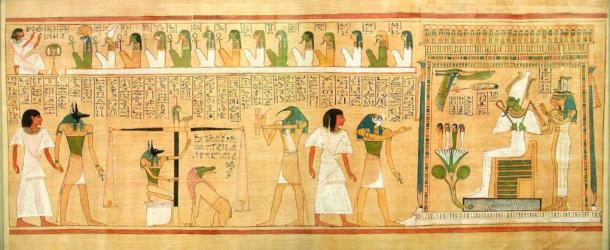
In the three scenes from the Book of the Dead, the dead man (Hunefer) is taken into the judgment hall by the jackal-headed Anubis. The next scene is the weighing of his heart, with Ammut awaiting the result and Thoth recording. Papyrus from 1275 BC ( Public Domain )
The Complexity of Ancient Egyptian Funerary Belief
The Pyramid Texts are just one of the many facets of the complex ancient Egyptian beliefs. So much emphasis was placed on burial, death, and afterlife that it almost overshadowed life itself. During the Sixth Dynasty, these beliefs and practices were perhaps at their highest. Each pharaoh had a lavish complex built for himself when the time to die came. The complexes included great temples, covered causeways, small temples, mortuary temples, smaller pyramids reserved for their queens, and so on. They were vast enterprises, and their construction spanned decades and was very costly.
And every single piece of these buildings was carved in exquisite detail, with tall columns, painted walls, reliefs and scenes, inscriptions and titles. These remain the most valuable glimpse into the history of ancient Egypt, telling us many episodes from the reigns of the pharaohs.
The Pyramid Texts, on the other hand, are different. They do not document actual parts of history, but are nevertheless very valuable. These spells and invocations are the key tool for understanding the complex Egyptian religion, and very early in their history as well. They are the rituals of the priests put down into words. What an ancient Egyptian priest chanted during the burial ceremony, we have the privilege to read and study. As such, the Pyramid Texts are simply priceless.
As the Soul Journeys Onward
One can only imagine the thrill and the permeating mystery that the discoverers of these texts had. To enter the underground tomb of a pharaoh, for the first time in thousands of years, and gaze upon the enigmatic ritual incantations penned down by priests of Ra and Anubis and Osiris; it is a feeling reserved only to the few early archaeologists.
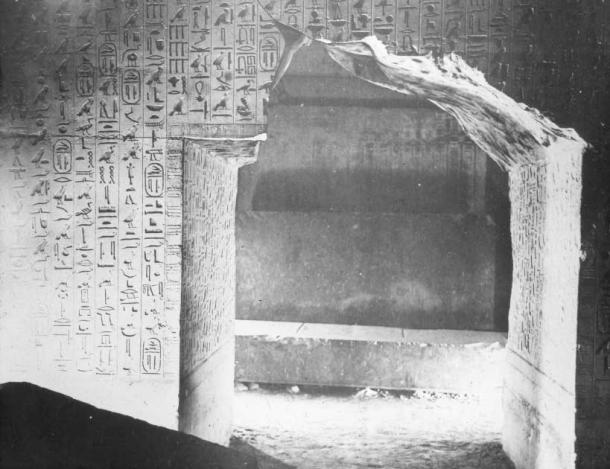
Photo from the 1900 discovery of the Pyramid of Unas (2360 BC) and its intricately carved pyramid texts ( Public Domain )
Either way, we cannot overlook the importance of the pyramid texts. Reserved only for the few centuries of the Sixth Dynasty, they are an ideal and very important glimpse into the funerary practices of the time. These beliefs endured throughout most of ancient Egyptian history, but the practice of carving the texts did not. By the time of some later pharaohs, the pyramids of Teti, Pepi, or Unas were long forgotten and considered ancient and distant history.
Top Image: The pyramid texts of ancient Egypt’s pyramids are a rich source of information on their beliefs and religion. Source: EvrenKalinbacak/ Adobe Stock
By Aleksa Vučković
Related posts:
Views: 0
 RSS Feed
RSS Feed















 February 24th, 2023
February 24th, 2023  Awake Goy
Awake Goy  Posted in
Posted in  Tags:
Tags: 
















